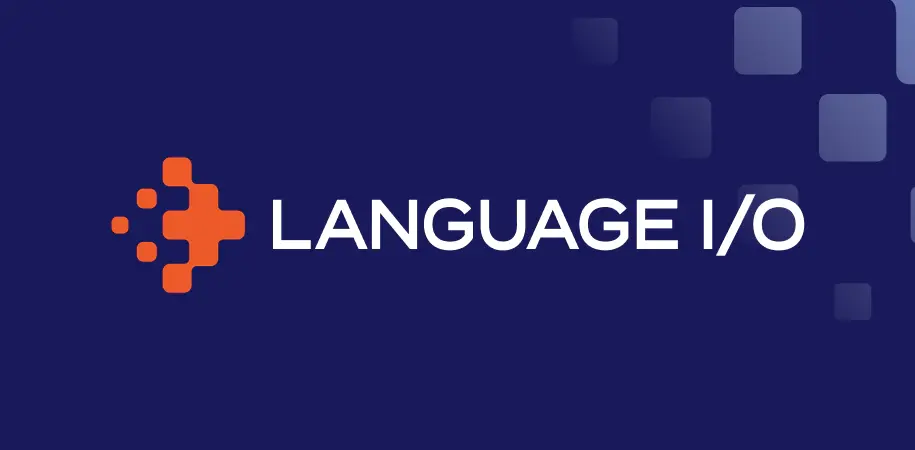By Andy Newlin, Director of Product Marketing
In today’s global landscape, businesses interact with customers from diverse linguistic backgrounds more than ever before. This is one reason we see 88% of support teams offering multilingual support (Intercom). However, maintaining the quality of these interactions across all the languages your organization supports presents significant challenges. At Language I/O, we understand the significance effective communication plays in the customer experience. That’s why we’re thrilled to announce our latest feature release: Translation Optimization.
What is Translation Optimization?
Translation Optimization is a feature that sits on top of our translation engines and enhances the quality of multilingual support conversations by refining the source text before it goes to the engine. Since each agent has their own style in responding, it makes it difficult for engines to handle these variations in speech patterns. This feature streamlines the translation process by ensuring the source content is written so translation algorithms can easily interpret it, producing a higher-quality output.

Our Chief Product Officer Chris Jacob highlights the essence of this feature: “We don’t want agents to think about how to phrase content… we want them to use their own voice and style, and our system provides the layer that ensures that voice is communicated properly, without losing context.”
Why is this a priority?
The concept of Translation Optimization stemmed from our recognition that the source content is a primary cause of inaccurate translations. Addressing this challenge means we empower global businesses to overcome language barriers and deliver quality support experiences that stand out to their customers without needing a physical support presence across all markets.
Jacob explains, “One of the most frequent observations from customers was that this was not something the MT engine could have gotten right. There is only so much an MT engine can do if the input quality is below par.”
What benefits can I expect?
There are vast benefits to implementing Translation Optimization in your multilingual support workflow. Through increased translation quality, businesses can expect shorter average chat sessions, reduced numbers of messages, fewer instances requiring clarification, increased first-time resolutions, and, most importantly, increased customer satisfaction. Your agents become less frustrated and more available, while your customers become loyal brand ambassadors.
Jacob emphasizes: “The goal of this feature is to improve translation quality, and the goal of improving translation quality is to improve the customer experience.”
Which organizations benefit the most?
Translation Optimization is important for organizations operating globally across multiple languages and cultures. Style can change from agent to agent and region to region, creating an unwanted level of complexity for the translation engines facilitating the conversation. Whether you have a lean team and are looking for ways to expand quickly or a multinational corporation searching for opportunities to boost quality and efficiency, our feature ensures that language barriers never impede your ability to deliver an exceptional customer experience.
How do I know if we are ready?
If you are considering whether Translation Optimization is right for your organization, there are several factors to consider. One way to start is by analyzing the complexity of your support interactions. Is there a high volume of instances where clarification is needed? Are conversations confusing the agents and customers? Also, check how diverse your customer base is. Do they speak multiple forms of the same language, ie, Formal vs Informal Spanish? Are there markets that speak a language you do not support that cannot justify a dedicated agent? Hiring is not always an option, and training agents not to communicate in their own voice is often impossible. Jacob mentioned, “It is extremely difficult to normalize speech patterns across a large number of agents… the goal is to capture the intent of the message and fine-tune it to better suit a machine translation process without needing to re-train the agent”.
Most importantly, you need to determine how committed your organization is to enhancing the quality of multilingual communication. If you see these challenges and are ready to make a shift, Translation Optimization should be the next logical step toward achieving your customer experience goals.
Buyer’s Guide to Multilingual Support Software
Selecting the right provider of this technology is critical for success. In this guide, we cover the key aspects of evaluating and selecting the right multilingual support technology provider for your organization.
What determines success?
Successful implementation of Translation Optimization hinges on several factors. Organizations should analyze support conversations for complexity and check if the feature has made them clearer and more concise. Managers should ensure the feature is being used and proper training and context are provided to support agents. Finally, key performance metrics such as NPS, CSAT, Average Resolution Time, and FTR must be monitored closely to gauge this feature’s impact on support interactions accurately.
In conclusion, Translation Optimization marks a new era in using AI for multilingual support. By leveraging the latest LLM technology to refine inputs for translation engines, Language I/O empowers international businesses to eliminate language as a blocker and deliver seamless support experiences across the globe. As Jacob said, “We expect this to decrease the complexity of support interactions by having a higher level of clarity… with the goal of shortening the average chat session, reducing the number of messages, and decreasing the likelihood of messages needing to be clarified.”
The possibilities for global customer support are limitless. Join us on this journey toward enhanced communication, unparalleled satisfaction, and ever-increasing success. Ready to embark on your journey to the new way of multilingual support? Discover the power of Translation Optimization with a live demo.
Enabled in Salesforce Chat.
We can help you put together an implementation plan that provides agents sufficient time for training and maximizes positive impact.


Zendesk-Ready.
If you’re using our Language I/O Parallel Translation for Chat, Tickets, and Messaging app, you can enable this feature today.



